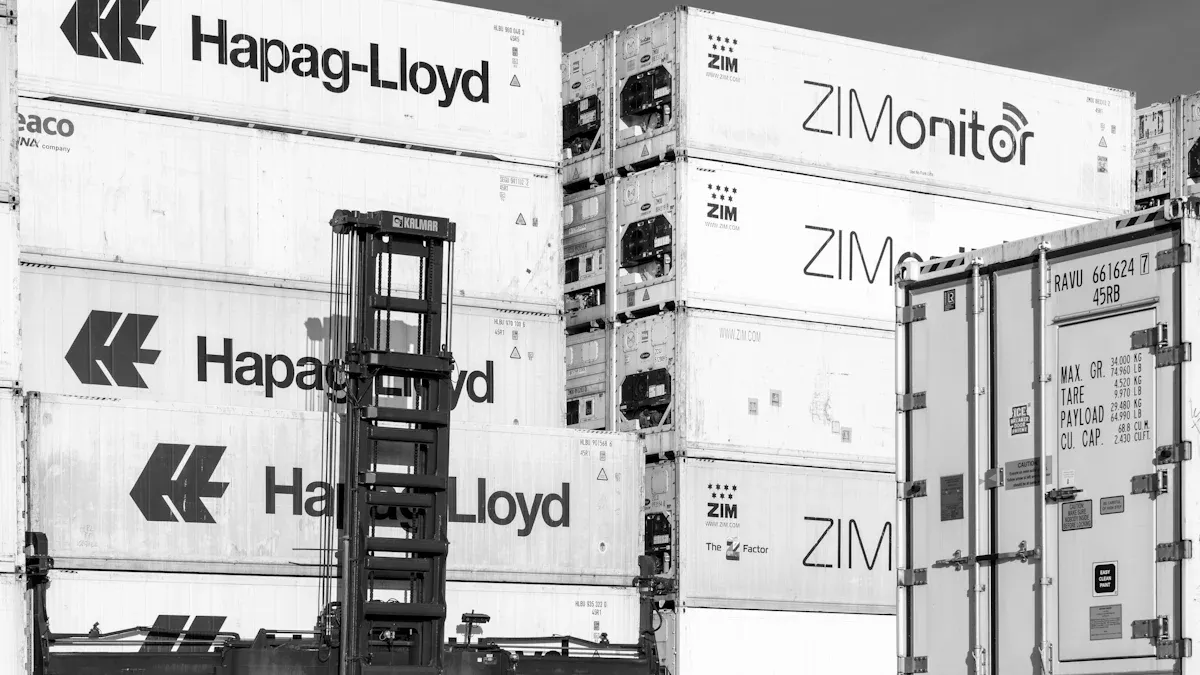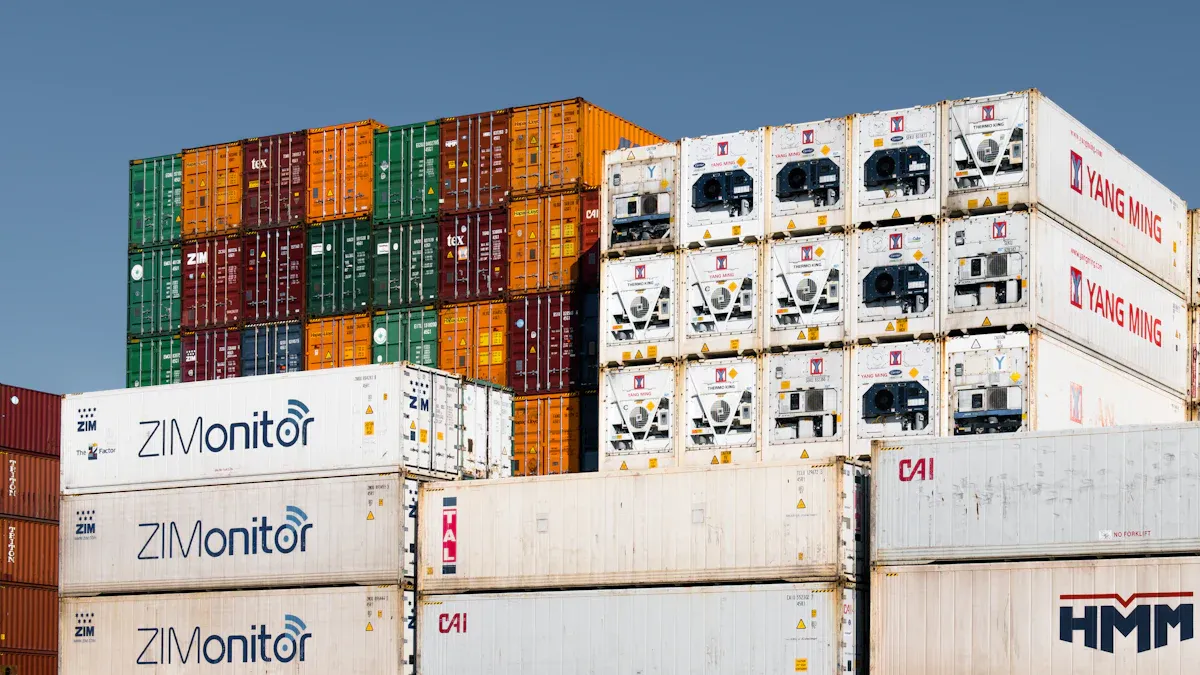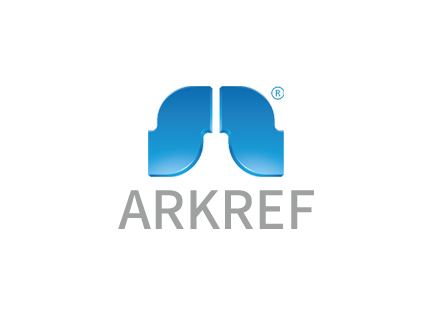How Reefer Containers Keep Perishable Goods Fresh During Shipping

Reefer containers use special cooling technology with tight temperature and humidity control to keep perishable goods fresh when shipping. These containers make a steady space for refrigerated transport. They protect produce and other goods that need certain temperatures from going bad. Refrigerated transport needs steady temperature control, checking in real time, and good cooling to help fresh produce last longer. Smart refrigerated storage near ports and cities helps ship fresh produce and other perishable goods around the world. Keeping things cold all the time during transport and storage makes sure refrigerated goods stay fresh, safe, and ready to deliver.
Key Takeaways
Reefer containers have strong insulation and cooling systems. They keep perishable goods fresh by holding steady temperatures and humidity during shipping.
Sensors and smart technology watch temperature and humidity all the time. This helps people act fast to stop spoilage.
Careful packaging, loading, and handling protect fresh produce and other goods. These steps stop damage and temperature changes during transport.
People follow strict food safety rules. Smart sensors and AI make refrigerated shipping safer, more reliable, and more efficient.
Sustainable solutions like solar power, electric trucks, and recyclable packaging help the environment. They also keep refrigerated goods fresh.
Reefer Technology
Insulation & Container Design
Reefer containers use special insulation and smart design to keep perishable goods fresh on long trips. Polyurethane foam is the main insulation in these containers. This foam is thick and strong, so it stops heat from getting in. The foam is about 50 to 120 mm thick, depending on the container. This helps keep the inside temperature steady, which is very important for refrigerated transport. The insulation and the container’s walls work together to keep cold air inside. They also block warm air from coming in. This setup helps with temperature-controlled shipping and makes sure refrigerated storage works well for fresh produce and other items that need to stay cool.
Tip: Good insulation keeps cold air in and helps save energy because the refrigeration system does not have to work as hard.
Refrigeration Units
Refrigeration units are the most important part of every reefer. These units use new technology to keep the inside at the right temperature for perishable cargo. Most units today use R-134A refrigerant, which is safer than older types like R-12. The Danfoss BD50F compressor gives about 25% more cooling power than old models, but it uses about 40% more energy. So, new units cool better, but they may not always save energy. Smart features like Automatic Energy Optimizing controllers help by changing the compressor speed when needed. The size of the unit, the insulation, and the outside weather all change how well the system works. These refrigeration units make sure refrigerated transport stays cold and safe for all kinds of perishable goods.
Modern container refrigeration units give:
More cooling for bigger or more sensitive loads
Smarter controls to use less energy
Better refrigerants for safer and stronger cooling
Humidity & Airflow Control
Humidity and airflow control are very important for keeping fresh produce and other perishable items in good shape during refrigerated transport. Fresh fruit needs humidity between 90–95%. This stops the fruit from losing water and drying out. If humidity is too high, water can build up and cause rot. Container refrigeration units use sensors and controls to keep humidity just right. Airflow systems move cold air all around the container, so every part stays at the set temperature. This stops hot spots and keeps refrigerated storage steady.
Some reefer containers have multi-temperature zones. This means they can make two or more different temperature areas inside one container. Shippers can move frozen foods, refrigerated dairy, and fresh produce at the same time. Each zone keeps its own temperature, so every product stays fresh and safe.
Note: Good humidity and airflow control stop spoilage and help refrigerated storage work well for all types of perishable cargo.
Temperature Control

Temperature-Controlled Zones
Refrigerated containers use advanced temperature control. They keep perishable goods fresh while moving. Each container can make different temperature-controlled zones. These zones let shippers move produce, pharmaceuticals, and seafood together. This stops spoilage. The refrigeration system keeps each zone at the right temperature for each type of cargo.
The table below shows common temperature ranges for refrigerated transport and storage:
Cold Room Type | Temperature Range (°C) | Typical Stored Goods / Application |
|---|---|---|
Refrigerated Cold Room | Vaccines, biological samples, research reagents | |
Freezer Cold Room | -15 to -30 | Meat samples, blood products, laboratory animal tissues |
Ultra-Low Temperature Room | -45 to -86 | Extremely temperature-sensitive biological samples (cell lines, viruses, gene libraries) |
Type of Container | Temperature Range (°C) | Typical Use Case / Goods |
|---|---|---|
Refrigerated Container | General refrigeration (0-18°C) and freezing (0 to -21°C) | |
Constant Temperature Example | 2 to 8 | Vaccines and other temperature-sensitive pharmaceuticals |
Refrigerated transport uses these zones to keep produce and other goods at their best. The refrigeration system changes cold air flow and temperature for each compartment. This helps keep every product fresh and safe.
Tip: Keeping each zone at the right temperature stops spoilage. It helps perishable goods stay fresh during long trips.
Real-Time Monitoring
Refrigerated containers use real-time temperature monitoring to protect perishable goods. Modern refrigeration units have sensors and IoT technology. These systems check temperature, humidity, and cold air flow every minute. If the temperature goes outside the safe range, the system sends alerts to workers.
Affirmo Technology uses LoRa-based GPS container trackers for real-time tracking. These devices work with LoRaWAN, Cat-1, NB-IoT, LTE-M, and BLE networks. Workers can see temperature data and cold air movement on an IoT Data Platform. Real-time temperature monitoring helps shippers fix problems quickly during refrigerated transport.
Real-time tracking gives:
Instant alerts for temperature changes
Data logs for cold chain audits
Better control over refrigerated transport
Note: Real-time temperature monitoring and tracking help keep produce and other perishable goods fresh. They stop problems before spoilage happens.
Preventing Spoilage
Refrigerated transport uses many features to stop spoilage and keep perishable goods fresh. Insulated compartments lower heat exchange and keep cold air inside. Integrated refrigeration systems control temperature and humidity for each zone. Precise temperature control lets workers set the best conditions for sensitive products like pharmaceuticals and seafood.
Special handling steps during loading and unloading also help. Workers follow strict rules to keep produce and other goods cold. These steps lower the risk of spoilage and keep products fresh.
Key features that prevent spoilage:
Insulated compartments for steady temperature control
Active refrigeration for cold air flow
Precise temperature control for each type of perishable cargo
Careful handling during loading and unloading
Refrigerated transport uses these features with real-time tracking and temperature control. This keeps produce and other perishable goods fresh from start to finish.
Callout: Strict temperature control and real-time tracking protect perishable goods. They help keep product quality high during refrigerated transport.
Refrigerated Transport

Power Sources & Connectivity
Refrigerated transport needs strong power to keep cold air moving. This helps keep the right temperature for perishable goods. Most refrigerated trucks and containers use diesel generators or plug into electric power at ports and warehouses. These power sources run the refrigeration units and keep cold storage steady during delivery. Some companies use battery backup systems to stop temperature changes if the main power goes out. For example, a 240kWh lithium-ion battery can switch to backup power right away. This keeps the refrigeration and cold air running even if there is a power outage. The modular design makes repairs and upgrades easy. Remote monitoring lets teams check the status of refrigerated freight transport from anywhere.
Tip: Good power sources and smart connections keep refrigerated transport safe. They help keep products fresh during delivery.
Reliability in Long-Distance Shipping
Long-distance refrigerated transport has many challenges. Trucks, ships, and trains must keep cold air moving for days or weeks. They must also keep the temperature steady. Logistics teams use advanced transport refrigeration systems to control temperature and humidity. Real-time monitoring lets workers track cold storage and fix problems fast. If the power fails, backup systems turn on right away to keep refrigeration working. This stops spoilage and keeps goods fresh until they are delivered.
Refrigerated transport uses strong insulation, active refrigeration, and smart controls to protect perishable cargo. Logistics companies plan routes and schedules to avoid delays and keep the cold chain strong. They use refrigerated freight transport for seafood, dairy, and produce that need special temperatures. Reliable transport refrigeration makes sure products arrive safely and with high quality.
Key features for reliable refrigerated transport:
Backup power keeps refrigeration going all the time
Real-time monitoring helps control temperature
Smart planning helps deliver cold goods on time
Note: Reliable refrigerated transport helps global logistics. It brings fresh products to markets everywhere.
Packaging & Handling
Loading Practices
Good loading is important for keeping produce fresh. Workers must load produce fast. This lowers time outside cold storage. They stack boxes so cold air can move around. Airflow helps keep the temperature steady. Workers use checklists before loading starts. They make sure the refrigeration unit is running. They check the temperature for the produce. Training teaches staff to spot problems. Staff learn best ways to ship produce. These steps stop spoilage and keep produce safe.
Tip: Good loading keeps produce safe from temperature changes and damage.
Packaging for Freshness
Packaging helps keep produce fresh in cold storage. Many companies use PET for salads and bakery items. PET blocks moisture and gas. PP works for ready meals and frozen foods. PP can handle heat and cold. OPS is clear for sushi and bakery products. OPS does not work for freezing. HIPS is strong and resists chemicals. HIPS is good for oily foods in cold storage. PPPE blends are flexible and seal well. PPPE works for cold and frozen produce.
Other packaging features help too. Airtight seals and leak-proof closures keep produce safe. Some packages have vents for airflow. Vents control humidity and temperature. Breathable designs let air move around produce. This stops spoilage. Strong packaging protects fruits and vegetables during shipping.
New technology helps food packaging last longer. Modified atmosphere packaging slows spoilage. Oxygen scavengers lower oxygen in packages. Some packages have pads that release safe gases. These gases kill mold in berries. Bilayer packaging has special layers. These layers keep humidity high and block UV light. This helps produce stay fresh longer in cold storage.
Handling During Transit
Careful handling keeps produce fresh during shipping. Workers avoid rough handling. This stops bruising and damage. They check the refrigeration system often. This makes sure it works well. Real-time monitoring tracks temperature and humidity. If there is a problem, workers fix it fast.
Training helps logistics staff do quality control. Staff use checklists and spot problems early. This keeps produce safe and fresh when it arrives. Good transport, packaging, and handling work together. They keep produce in top condition during shipping.
Note: Every step matters for keeping produce fresh in cold storage and transport.
Compliance & Innovation
Food Safety Regulations
Refrigerated transport must follow strict food safety rules. These rules protect perishable goods during shipping. The rules are different for pharmaceuticals and fresh produce. Pharmaceuticals need very cold temperatures and special packaging. Fresh produce follows FSMA and HACCP rules to stop contamination. Both types use real-time temperature checks and tracking. Trained workers load goods, check temperatures, and know what to do in emergencies. All shipments need good records, especially pharmaceuticals. Cold chain management means pre-cooling, careful loading, and planning for delays. Using more than one type of transport keeps refrigeration steady from start to finish.
Pharmaceuticals | Fresh Produce | |
|---|---|---|
Regulatory Framework | Good Distribution Practice (GDP) regulations | Food Safety Modernization Act (FSMA), HACCP |
Temperature Control | Ultra-low temperature ranges, validated packaging | Strict temperature control within chilled range |
Equipment Sanitation | Specialized cleaning to prevent contamination | Food-grade equipment cleanliness, USDA/FDA standards |
Monitoring | Real-time temperature monitoring with alerts | Real-time temperature monitoring and logging |
Documentation | Audit-ready documentation, shipment history | Digital recordkeeping per FSMA requirements |
Personnel Training | Specialized handling by trained personnel | Drivers trained in cold chain and food safety |
Load Security | Sealed loads with strict seal verification | Sealed loads, prevention of cross-contamination |
Compliance Stringency | More stringent regulatory and validation requirements | Compliance focused on food safety standards |
Note: Following the rules keeps the cold chain strong and products safe in refrigerated shipping.
Smart Sensors & AI
Smart sensors and artificial intelligence have changed refrigerated shipping. Sensors watch temperature, humidity, and location all the time. AI changes delivery routes if there is traffic or bad weather. This keeps refrigerated cargo at the right temperature and helps avoid delays. AI also makes sure urgent deliveries get there first and helps save money. Smart packaging uses RFID and NFC to send alerts if the temperature changes. These tools help food last longer and stop spoilage. Top companies use IoT sensors for real-time tracking and better cold chain control. AI and sensors help save energy and keep refrigerated goods safe during shipping.
Smart sensors check temperature, light, and gas.
Smart packaging gives alerts for cold chain control.
IoT sensors help with tracking and supply chain checks.
Tip: Smart sensors and AI make refrigerated shipping work better and more reliably.
Sustainable Solutions
Sustainable technology helps lower the impact of refrigerated shipping on the environment. Solar-powered cold storage uses less fossil fuel. New refrigeration systems use safer refrigerants that hurt the planet less. Electric delivery trucks cut down on pollution from refrigerated shipping. Packaging matters too. IML packaging uses one material, so it is easier to recycle. Lighter packaging makes shipping more efficient and lowers carbon emissions. Reusable containers and biobased films help cut waste and fossil fuel use. Closed-loop packaging treats containers as valuable, not trash. Digital tracking helps use containers better and supports green reporting.
Solar-powered cold storage saves energy.
Electric refrigerated trucks lower pollution.
Lighter, recyclable packaging cuts waste.
Reusable containers and biobased films help the environment.
Digital tracking makes logistics and sustainability better.
Callout: Sustainable refrigerated shipping helps the planet and meets new rules and what customers want.
Reefer containers use cooling technology to keep perishable goods fresh. Insulation, refrigeration units, and humidity control all work together. Real-time monitoring lets workers check zones and stop spoilage. Packaging and careful handling protect fresh produce and other items. Food safety rules help keep products safe and fresh. Smart sensors and AI make refrigerated shipping work better. Sustainable solutions help the environment and improve transport. New ideas in refrigerated systems help global trade and keep goods fresh longer. Refrigerated shipping will keep changing with new technology and better methods.
Refrigerated containers help deliver fresh products safely and support the future of refrigerated transport.
FAQ
How do reefer containers keep perishable goods fresh during long shipping trips?
Reefer containers have thick insulation and cooling units. They use temperature control systems to keep things cold. These features help protect perishable goods. Real-time monitoring checks the temperature all the time. Tracking helps workers keep produce fresh while shipping.
What is real-time tracking in refrigerated transport?
Real-time tracking uses sensors and GPS to watch temperature and humidity. It also checks location during shipping. Logistics teams look at this data often. They can act fast if something goes wrong with cold goods.
Why is temperature control important for shipping fresh produce?
Temperature control keeps produce at the right cold level. This stops spoilage and keeps food fresh. Cold chain management helps protect perishable goods during shipping and storage.
What packaging helps keep perishable goods fresh in refrigerated storage?
Packaging with tight seals and vents protects perishable goods. Strong materials help keep produce safe. Modified atmosphere packaging and biobased films keep food fresh longer. These choices help cold chain work better.
How do logistics companies ensure cold chain integrity during transport?
Logistics companies use zones with different temperatures. They check temperature with real-time monitoring. Backup power keeps cooling working if power fails. Staff learn how to handle perishable goods. Smart tracking tools help keep cold storage safe.
See Also
The Importance Of Cold Rooms For Product Freshness
Step By Step Guide To Installing Cold Rooms For Produce
Seven Leading Advances Transforming Cold Storage Logistics
How Cold Rooms Are Revolutionizing Industrial Storage Methods

